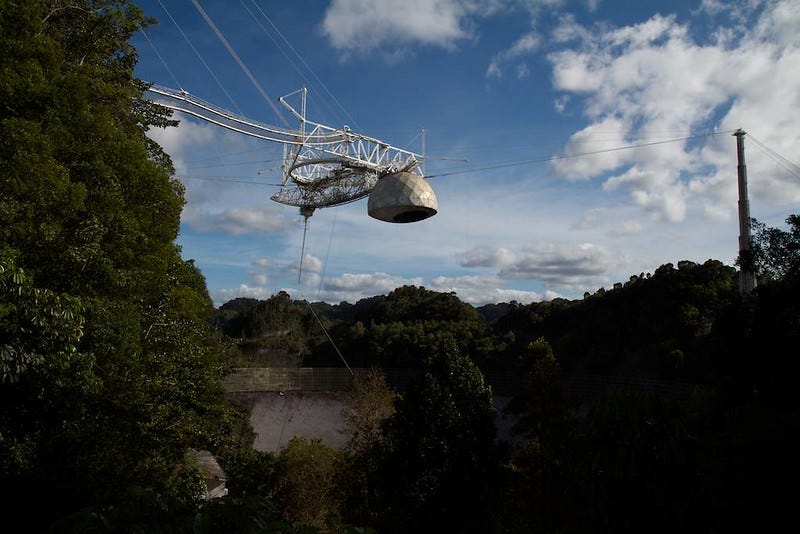News briefs: Arecibo, cedar trees and high-speed trains
Plus, what investors should expect of Paris-aligned accounts, and how to make cows less gassy

For more than 50 years, the Arecibo Observatory in Puerto Rico, above, was the world's largest single-aperture telescope. Recent cable failures have done significant damage to the dish, and officials have decided the 1000-foot diameter telescope will have to be demolished. It was used for research in radio astronomy, atmospheric science, and radar astronomy, as well as for programs that search for extraterrestrial intelligence (SETI). And it played a role as the location of the fight scene in the 1995 James Bond film GoldenEye.
Climate change is killing Lebanon’s cedar trees
NPR reports that changing weather patterns in Lebanon, which has a long Mediterranean coastline and mountain ranges, are also upsetting the ecology of the country’s iconic cedar forests. Warming temperatures have resulted in growing infestations of the web-spinning sawfly, which has killed entire tracts of forest. Scientists are forecasting rising average temperatures, as well as increasing drought and fire danger. The report notes that while the Lebanese government knows of the problem, the country’s economic weakness prevents funding efforts to protect and save the trees.
Investor expectations for Paris-aligned accounts
London-based Institutional Investors Group on Climate Change’s report, titled Investor Expectations for Paris-aligned Accounts, sets out steps investors require companies to take on the issue. The Investor Expectations were recently sent to 36 of Europe’s largest companies along with a letter signed by 38 investors who collectively represent $9.3 trillion in assets under management or advice. According to IIGCC, the document set out five clear steps companies should take in preparing Paris-aligned company accounts. It also outlines expectations for auditors to call out where accounts are ignoring material climate risks and making it clear they should say when accounts are not Paris-aligned.
UN: Amount of materials extracted from Earth tripled since 1970
More than 38 billion tons of material were extracted from the Earth in 2017 for trade, a figure that shows how much the demand for raw resources has increased in recent decades, a new United Nations report has found. ABC News reports the materials include biomass, such as wood and crops for food, energy and plant-based materials; fossil fuels, such as coal, natural gas and oil; metals, such as iron, aluminum and copper; and non-metallic minerals, such as sand, gravel and limestone. The volume of trade has increased at a faster pace than the volume of the extracted resources since the 1950s, the report shows. The processes of extraction, use and disposal of material resources affects the planet’s climate, according to the report.
Hawaiian seaweed makes cows 90% less gassy
Research has shown that replacing just 0.4% of a cow’s feed with a red seaweed known as A. taxiformis reduces the amount of methane the cow produces by more than 90%, Jeff Kart writes in Forbes. Methane is 34 times more potent than carbon dioxide when it comes to contributing to climate change. Kart says Symbrosia, the startup that’s turning it into a supplement for livestock, was chosen as part of the 2020 Solver class by MIT Solve, an initiative of the Massachusetts Institute for Technology. Symbrosia will receive a portion of more than $2 million in prize funding and more opportunities via investors and venture.
China, Japan, building ultra-fast maglev trains
China and Japan are working on ultra-fast levitating train project worth a combined $100 billion and focusing on the technology’s export potential. A report published in Bloomberg Green notes that only a few magnetic levitation trains are currently in operation in Asia, but the projects in Japan — to connect Tokyo and Osaka by 2037 —and China — between Shanghai and the eastern port city of Ningbo — would be the world’s first long-distance intercity lines.
